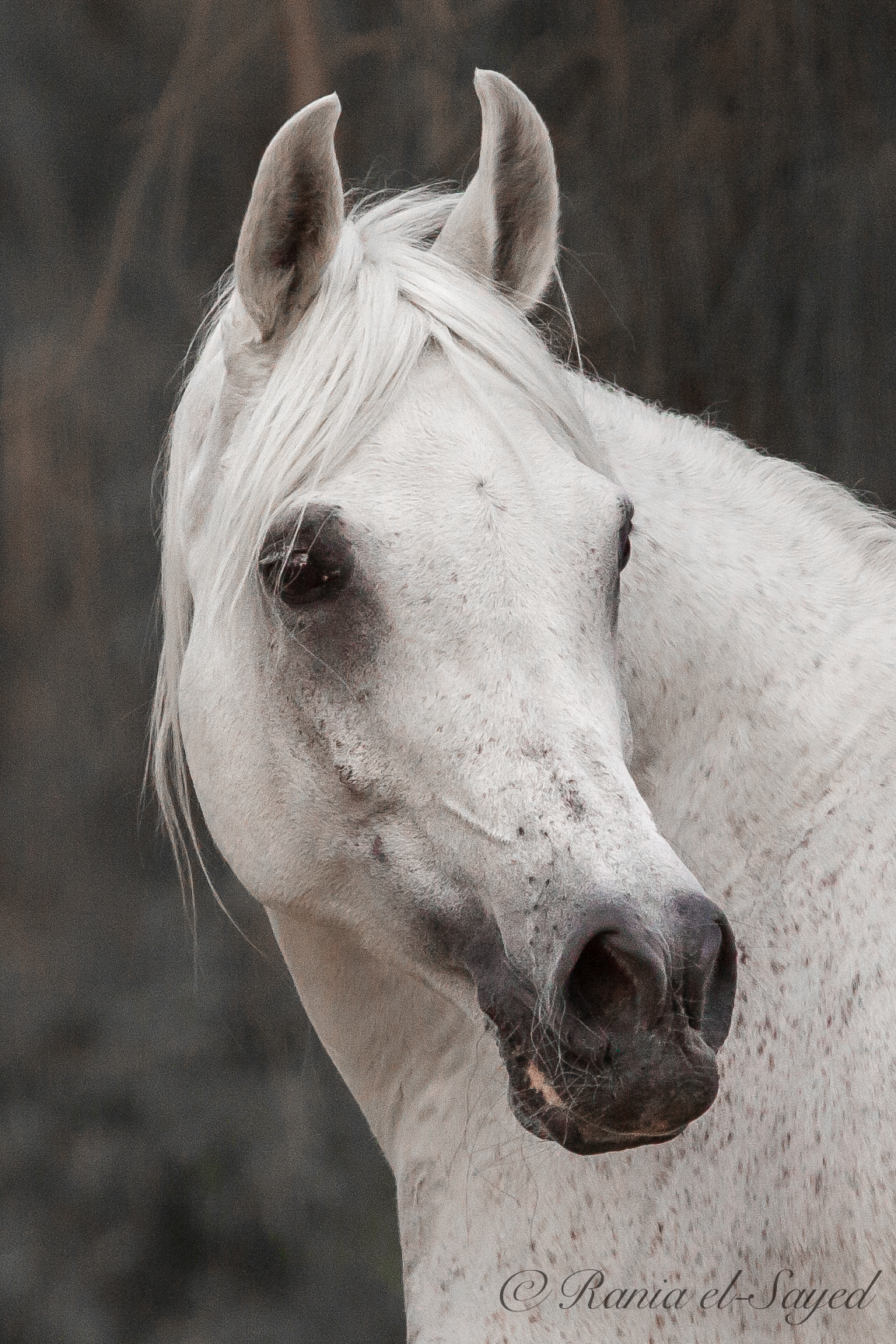“Don’t let the beauty of a horse fool you, my exalted sultan… fine looks do not indicate a sound character”, he said.
One day Salahuddin summoned his courtiers, dignitaries of state, and commanders of his stables. He had been on a mission of fetching the finest of horses required for his military campaigns. And for that purpose, he sought knowledge of the qualities, breeds and ailments of the Horse. There were few moments of silence following some questions which Salahuddin posed. Then a sound from among the crowd said: “My exalted Sultan, I shall tell you all about all what Your Majesty wishes to learn, and I shall quench your thirst for knowledge.” This is anecdote is not the product of my imagination; it is actually written in one of the Arabic manuscripts I discussed in the previous post.
Salahuddin was not the first to seek knowledge about horses. The quest for the ultimate performer in racing, hunting, and breeding as well as in equestrian games was and remains the concern for sultans and soldiers alike. Beauty in those past days was the last of all concerns, if not at all. “Don’t let the beauty of a horse fool you, my exalted Sultan”, said he who took the initiative to teach Salahuddin about the qualities of the horse, “fine looks do not indicate a sound character”, he said. Beauty is not an indicator of courage and steadfastness when advancing towards beasts such as camels, elephants, giraffes, lions or tigers, nor when crossing waters or hills, or riding up the mountains. Beauty is not an indicator of ability to sustain breathing effort in races or when enduring hunger or thirst or when the horse is required to maintain calmness when carrying its human master in times of war and peace.
For all these reasons, character and physical soundness occupied an undivided attention of horse-breeders, traders and owners.

The Arabic manuscripts which I discussed in my previous article are abundant with texts transmitted from generation to the other dedicated to educating the reader about the qualities of the pureblood horse and otherwise. Authors of these manuscripts sought the knowledge of other civilisations which preceded the Arabs and had excelled in equestrian disciplines and veterinary sciences. Ibn Akhi Hizam himself admits that he consulted the Persians and the Arabs as well as the sages of India. Abu Bakr al-Nasiri copied from Ibn Akhi Hizam’s treatise and translated from others such as the Greeks.
The Arabian horse is referred to mostly as al-Atiq. The term atiq is used to describe the horse which was born of an Arab dam and an Arab sire. It also described the horse which is salvaged from any impurities or ill qualities that put its pure blood into question. For further reading about the term and the development of its usage, please consult volume 6 of the series Asil Arabian/ Asil Araber issued by the Asil Club of Germany.
The atiq horse is the strongest and most enduring of all animals. It lives on little food and water during travels and raids. It is the strongest of all beasts because it can carry a rider in addition to his weapons, flag, food for both, and water; it can gallop and I quote “for a full day without fatigue nor experience hunger or thirst”. An atiq horse is a horse that sustains prolonged breathing effort and exerts itself in speeding.

What qualities enable it to perform with such excellence?
The neck, the cheekbones, the four cannon bones, the abdomen, the arms, the thighs, all are required to be long. The four pasterns, the dock of the tail, the tibia, all are required to be short. The cheeks, the forehead and the face, the four limbs (which also ought to be long) all are required to be dry and clean of any flesh. The thighs, the waist, the hips, the muscles of the chest (i.e the breast) all are required to be concealed in flesh. The four cannon bones, the four pasterns, the dock of the tail, all are required to be thick and dense. The nostrils, the ears, the two lips all are required to be fine and delicate. The ears, the heart, the hock, the shoulders, the joints of the knee and the joints of the long pasterns and short pasterns as well as the eyes are all required to be solid and sharp respectively in terms of the function of each. The chest, the back, the thighs, the two hips, the cannon bones, all are required to be broad. The skin should be flexible and clean of flesh.
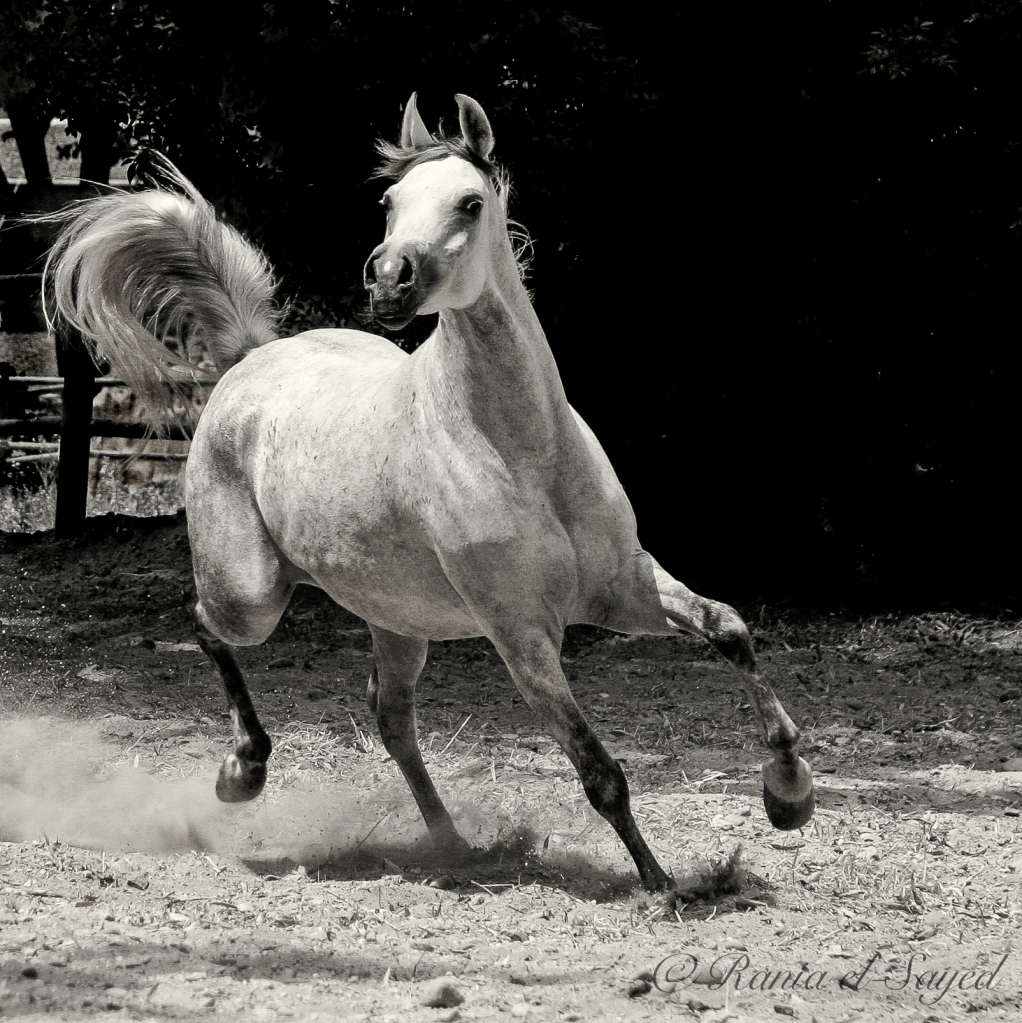
An atiq horse should possess, and I quote, “wide nostrils and large abdomen”. The author adds that if an atiq horse lacks a large abdomen, the air would not find room to flow and thus the horse would not endure the effort required to cover long distances. Additionally, if it lacks wide nostrils, the air flowing inside the abdomen will not find space to exist the body which negatively affects the speed of the horse.
An aitq horse has a long neck that sits firmly on the withers since a long neck supports a horse in its gallop. The chest should be wide to make space between the forelegs and to allow space for airflow; and the breast should be pronounced “like the bosoms of a virgin”. The withers should be prominent but not visible and so the shoulders towards the wither, they also should be prominent. The humerus bones should be short so as to fit into the forearm. The sinews lying above the knee in the forelegs should be large and bulging to demonstrate the strength of the forelegs and the ability of the horse to extend both while galloping. An atiq horse possesses large thighs on which it counts to create propulsion of movement. The hooves should be hard to tread on rough terrain and the joints of the long and short pasterns should be dry of any flesh and sinewy. The waist should be firm and the ribs should be long. The hock should be hard and well-defined. The lower part of the pasterns should be wide. The hooves should be wide and round at the edges. The apex of the frog should be small and hard. The back should be short with wide and levelled vertebrae.
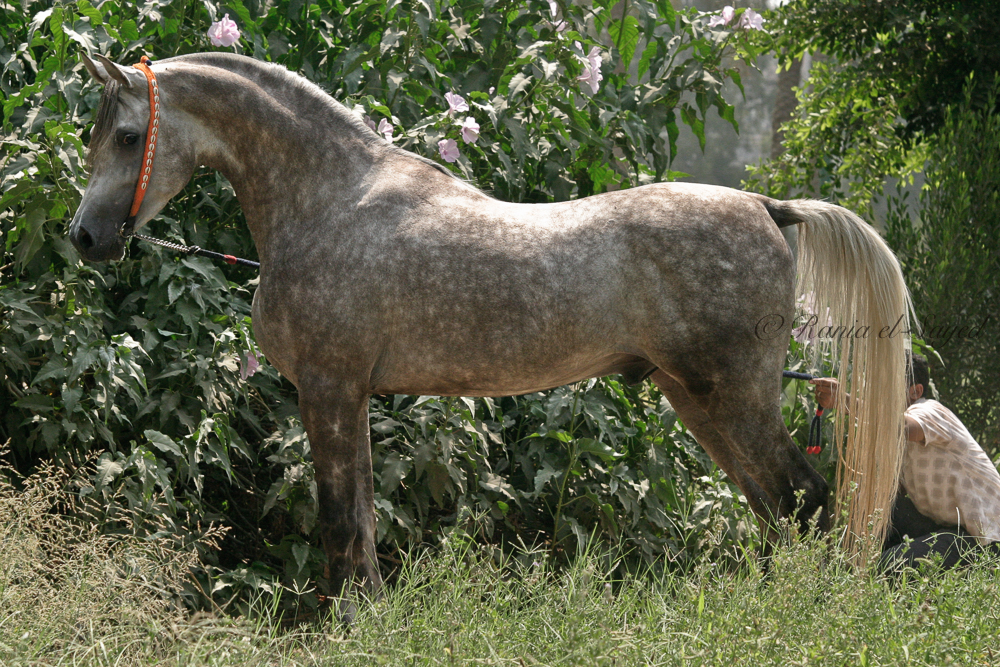
An atiq horse should possess a pleasing face, delicate lips with both sides extending backwards hence giving more room to the mouth. The tongue should be lengthy because a lengthy tongue generates more saliva which relieves the horse when it exerts itself in galloping. The tips of the two nostrils are preferred to be wide; when the nostrils dilate to take in air, they define the bridge of the nose all the way upwards.
The nasal bone should be straight, neither descending inwards nor protruding (like a Roman nose) and should be void of any depression from below the noseband to the tip of the lips. Such a depression is and I quote “detestable for its ugliness and because it narrows the passage of air flow”. The nasal bone from the place of the noseband to the forehead (jibha) should be straight from the front and from both sides. This straight composition is a sign of beauty and a proof of purity of blood. The course of the tears (a depression located below the eyes) should be dry i.e, the skin should be attached to the bone, another proof of purity of blood. The cheeks should be defined, smooth, levelled, broad and long, collectively considered signs of beauty.
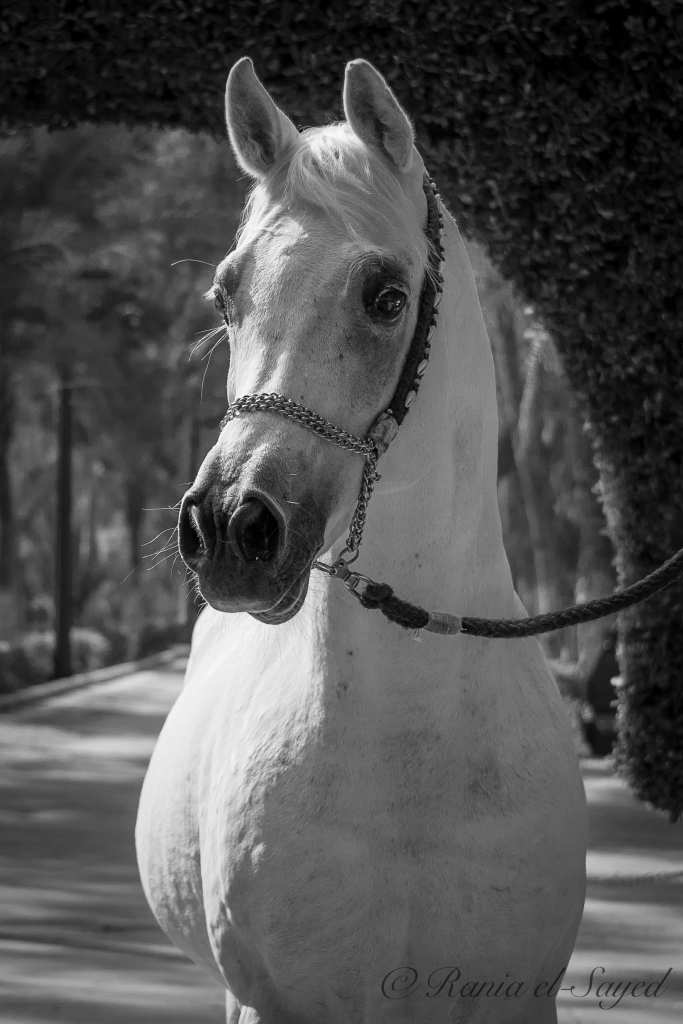
The eyes should be large, clear, dark black in colour; sharpness and clarity of vision of far and near objects is a must. Both eyes should be protruding to enable rear, front and side views. The two sockets above the eyes should be narrow for firmer structure of the eyes which should be distant from one another; the same should apply to both ears. The eyebrows should be defined, another proof of purity of blood. The forehead should be broad, clean of any flesh so that the skin is attached to bone of the skull. A broad forehead is preferred as it indicates a brain of a larger size. The ears should be well-defined, long and firm at the base yet flexible when bent, all considered markers of beauty; the tips of the ears should pointy – which is considered an indicator of pure blood – enough for a maiden to apply kohl in her eyes with them (metaphorically speaking). The forelock should be long and as fine as combed silk. Any coarseness found in the forelock is an indicator of impurity. As for the tiny hairs at the base of the forelock and those surrounding it, they should also be fine.
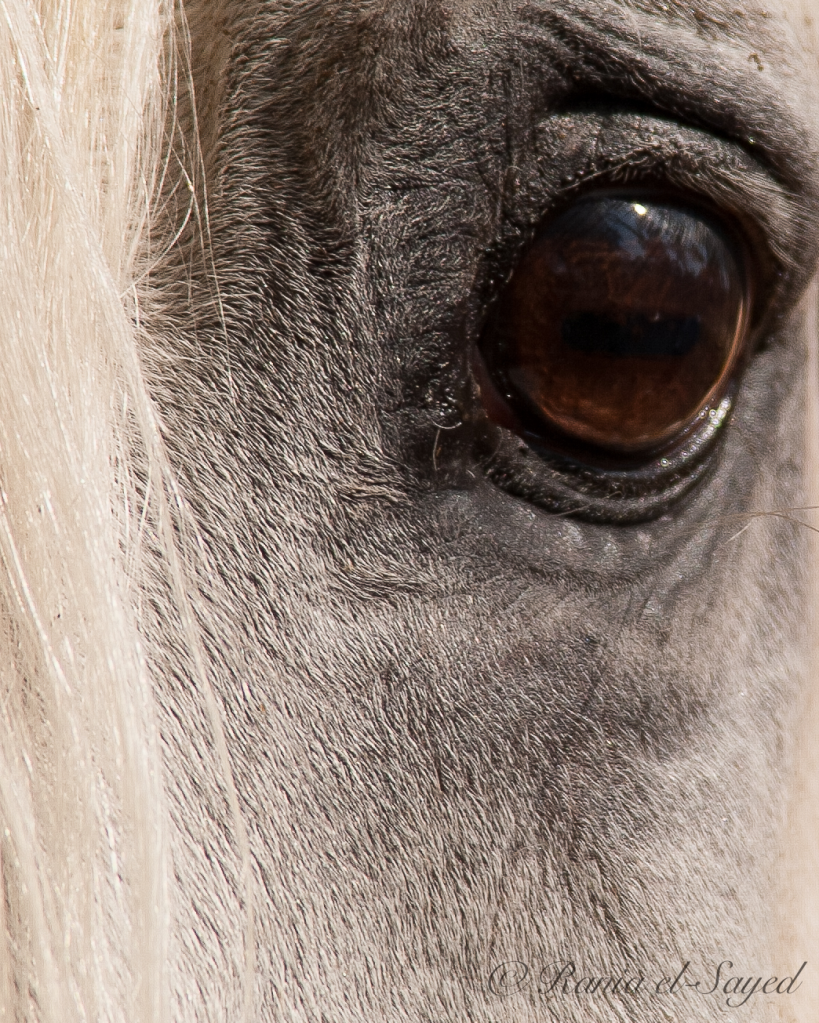
“The most beautiful of horses which a horseman owns is a horse that embodies excellence in behaviour and physical qualities,” as our predecessors wrote. The Arabs laid down the beauty criteria of the atiq horse. By examining Arabic manuscripts one concludes that these criteria had been transmitted in writing for over 1000 years. Despite the fact that the Arabian horse had been relocated and bred oustide its homeland, these criteria never changed. Together with these qualities, the concept of beauty continued to be associated with the functionality of the Arabian horse and thus guaranteed physical qualities which endured well into the 20th century.
Stay tuned for part II !
